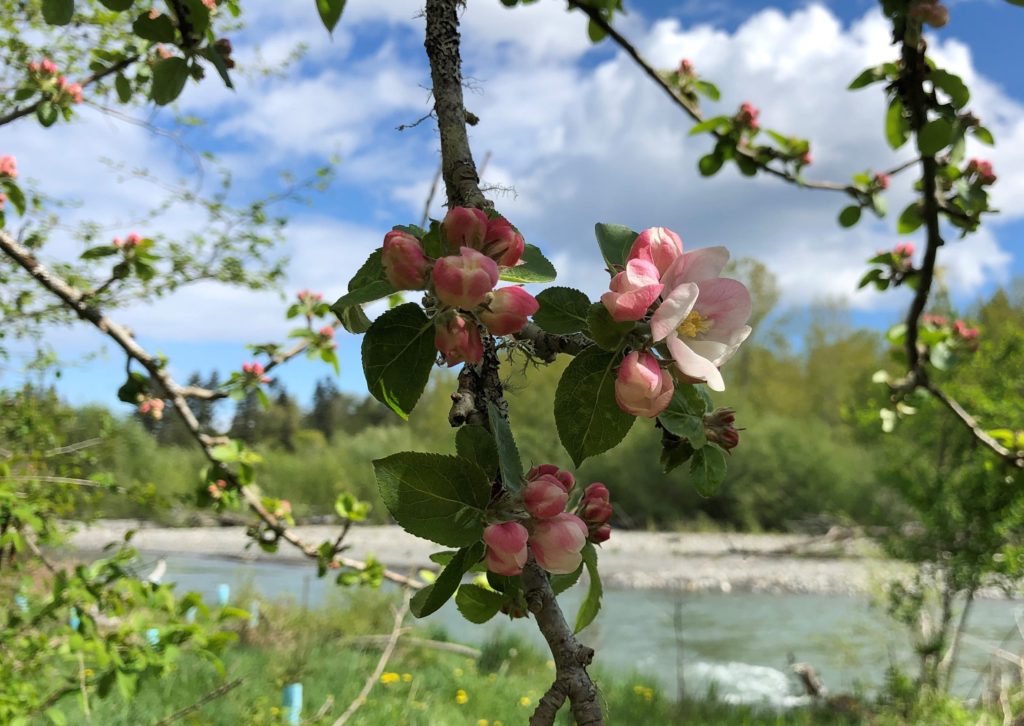
Springtime birds and bees
Above: Heritage apple blossoms against backdrop of Elwha River.
In this season of gentle rains and sunshine we have been busy as bees, feeding the soil and planting garden beds with dreams of an abundance of healthy vegetables in June. The honey bees alongside us and our pastured hens in the adjoining field have also been busy. As the bees collect pollen and nurture their brood, and the chickens scratch for bugs and lay an abundance of eggs, we are happy for the symbiotic and diverse relationships we nurture on the farm.
We caught a swarm of honey bees! This photo is actually of the second swarm, so a little smaller than the previous swarm. We were able to lower it into our bee “super,” as it’s called, with frames for the bees to begin filling with honey, pollen and thousands of eggs.
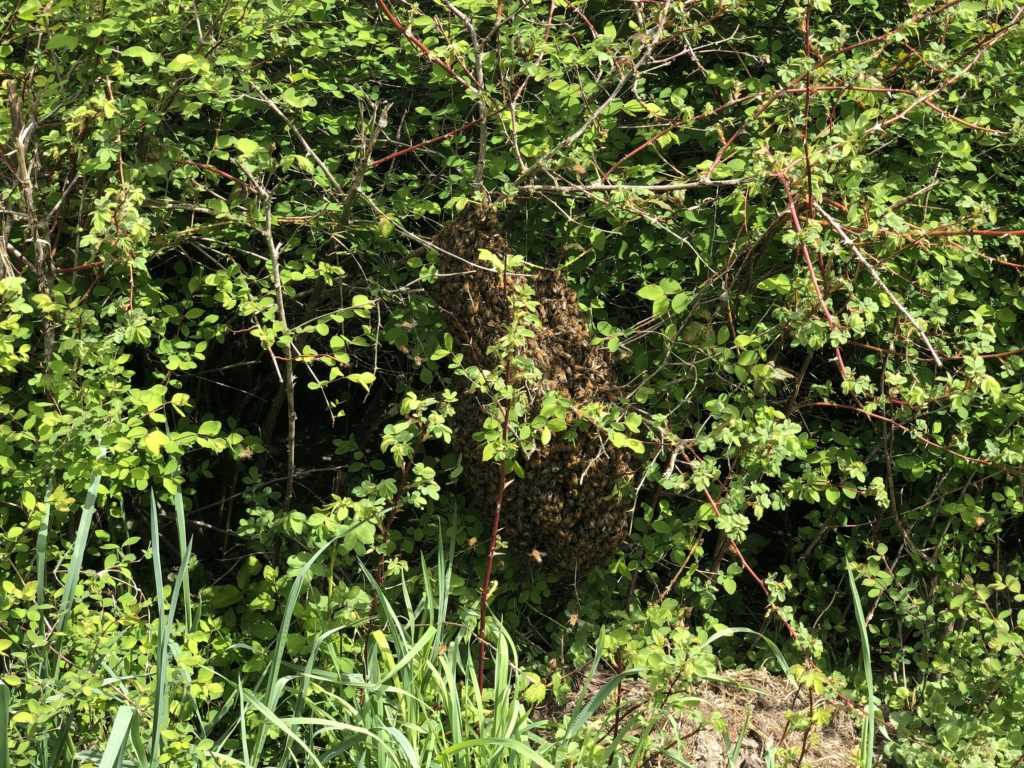
Small swarm of honey bees on wild rose bush at the edge of the market garden
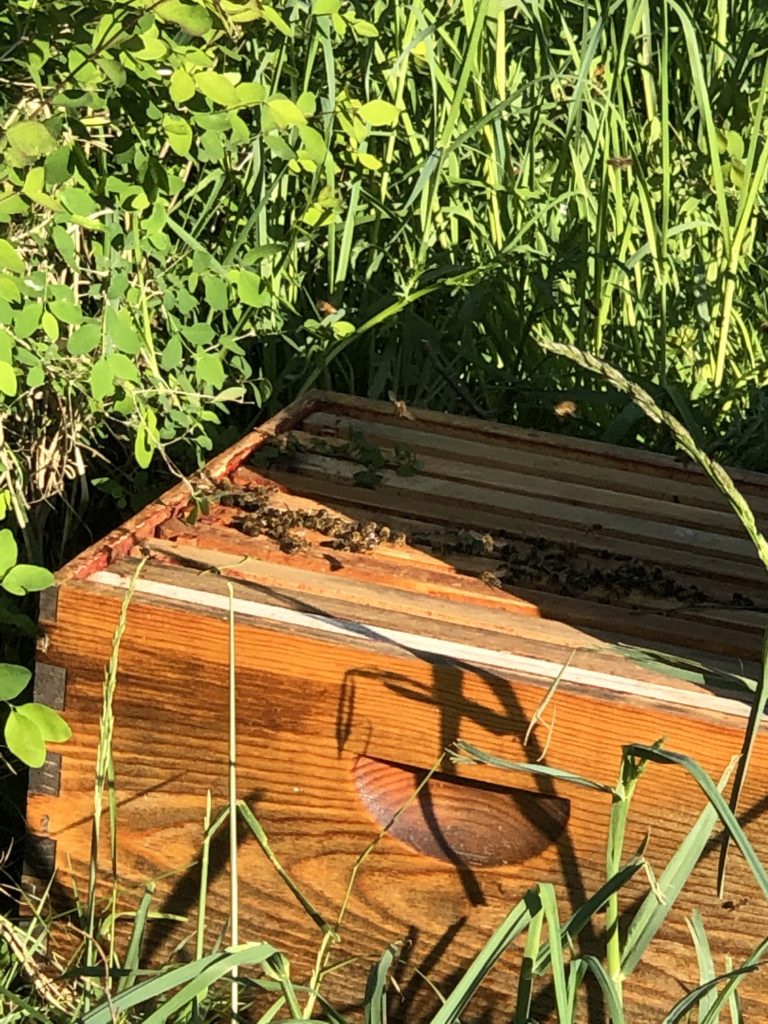
Bees lowered into “super” 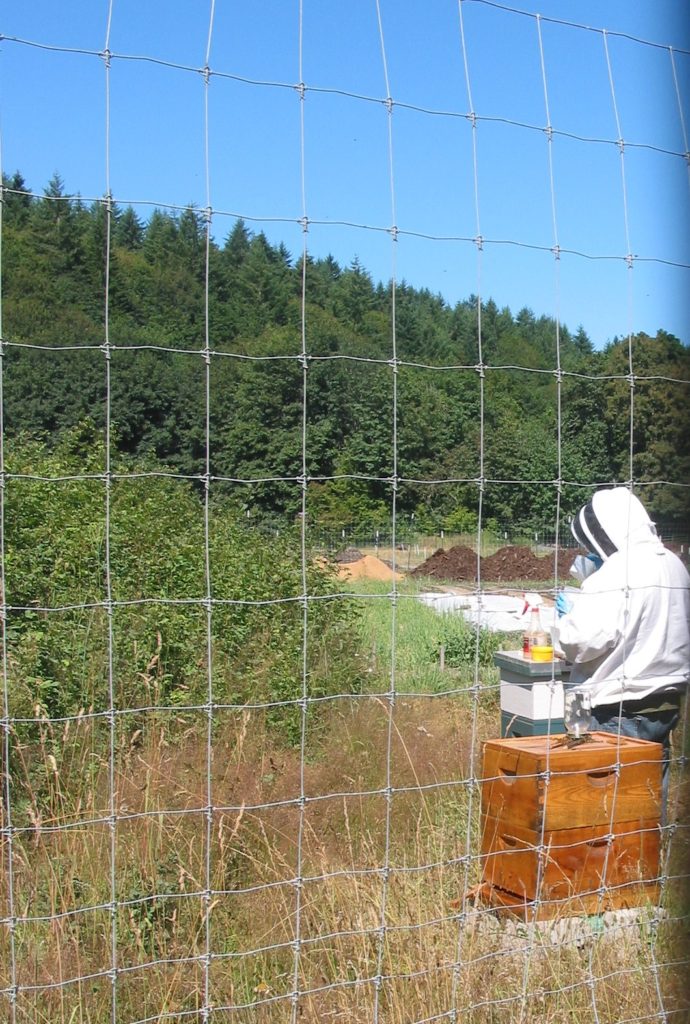
Multiple hives 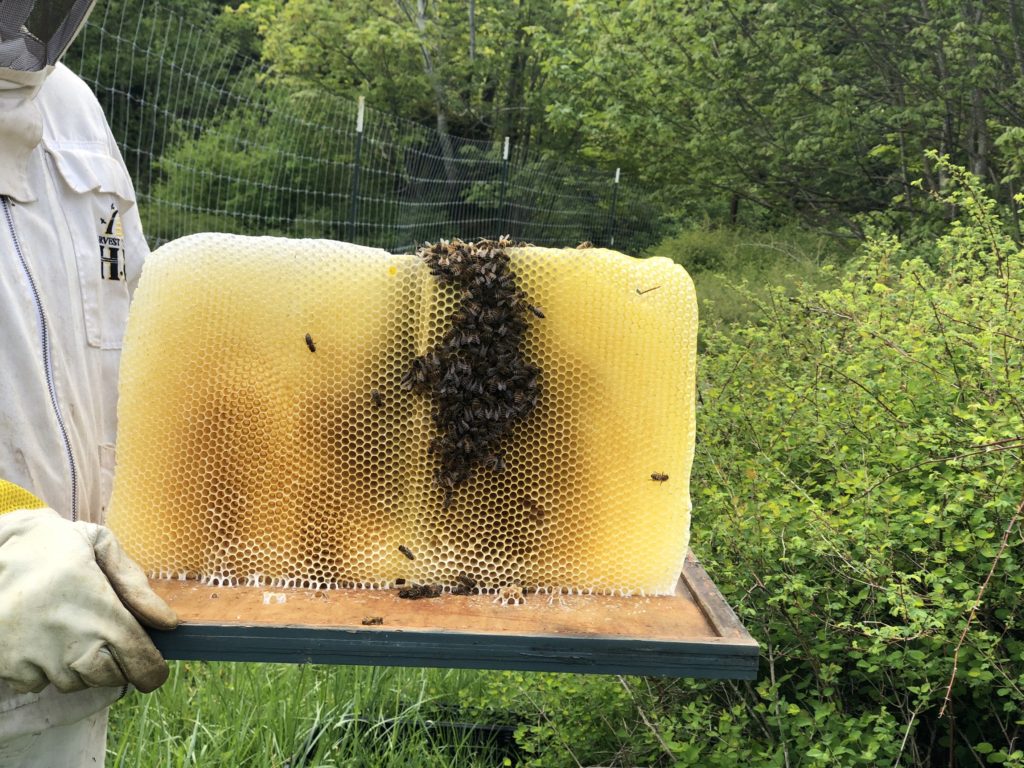
Honey bee cells
Our hens have been busy, too.
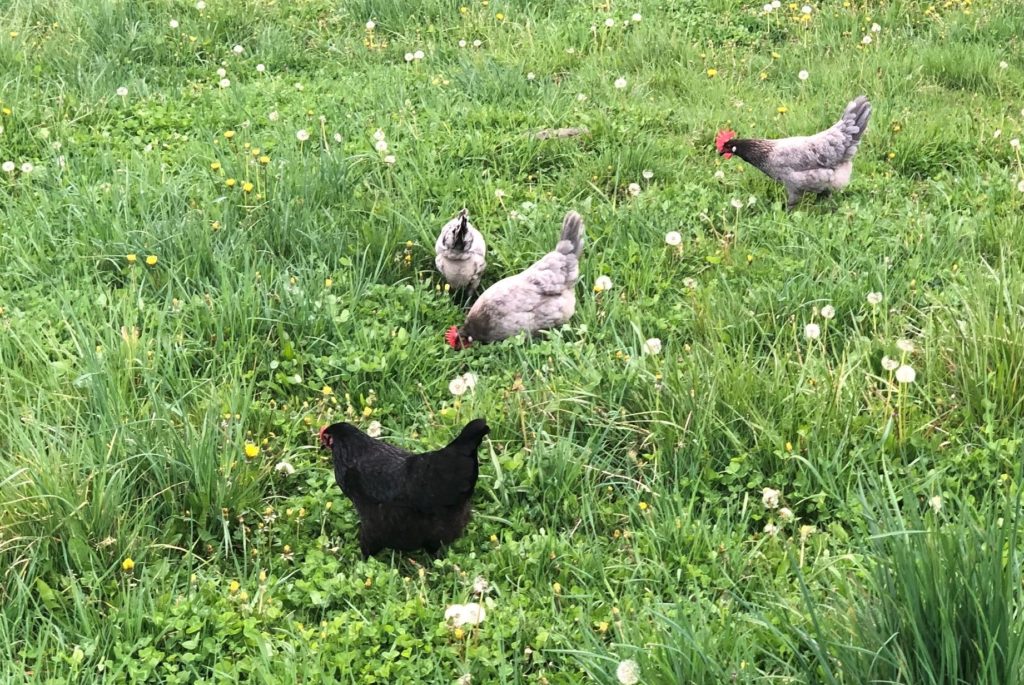
Black Australorp and Blue Andalusian hens search our pasture
industriously for flies and worms
As with our heritage breed Tamworth pigs, we place a high value on raising heritage breed chickens in order to nurture the diversity and resiliency needed for healthy agriculture. While we have raised many heritage breeds over the years, our current flock includes Blue Andalusian, Rhode Island Red, Black Australorp, and Brown Leghorn, all of which are either “on watch,” or “recovering” heritage breeds.
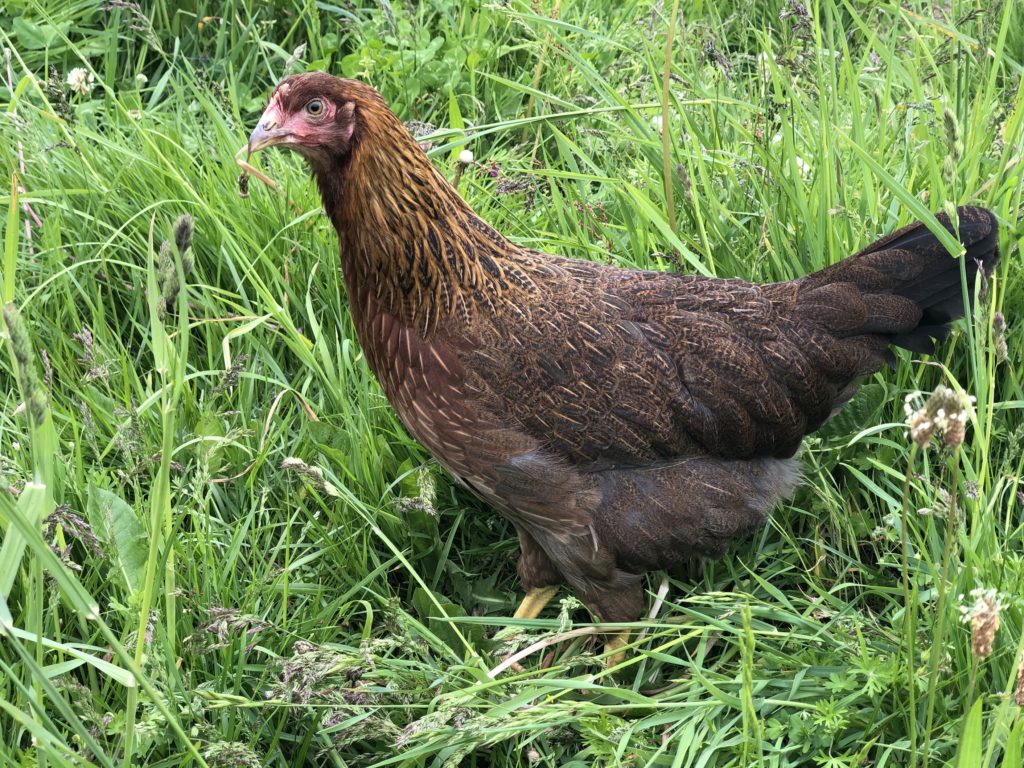
Brown Leghorn hen 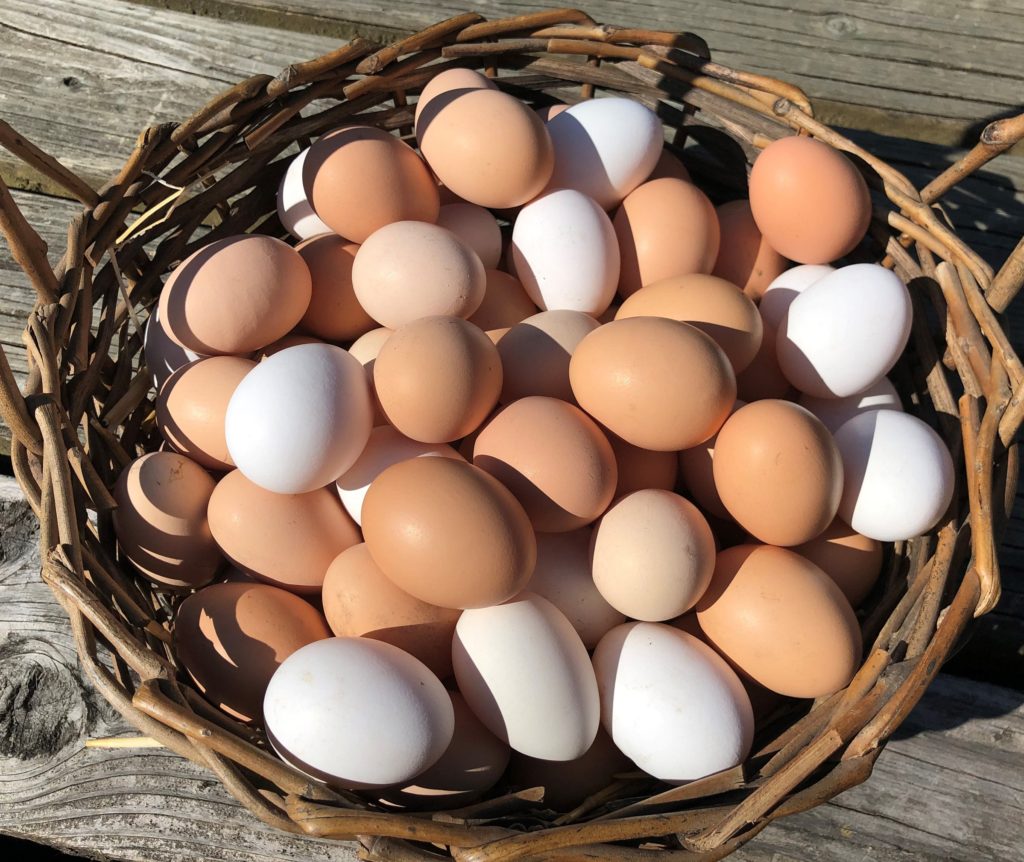
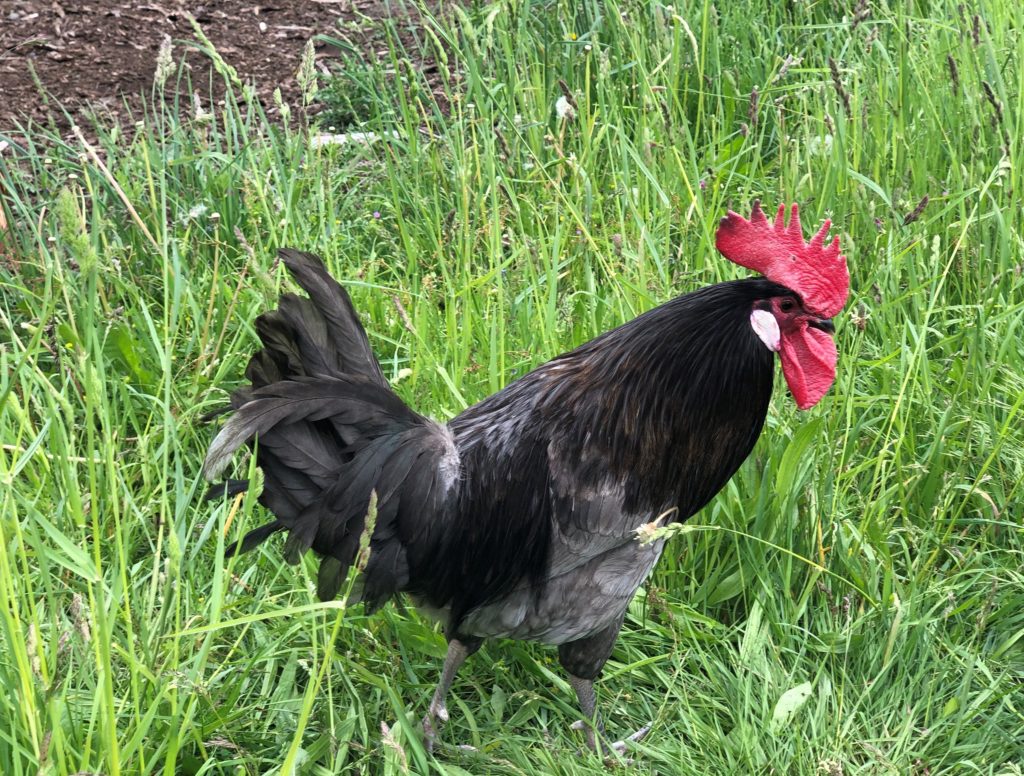
Blue Andalusian rooster 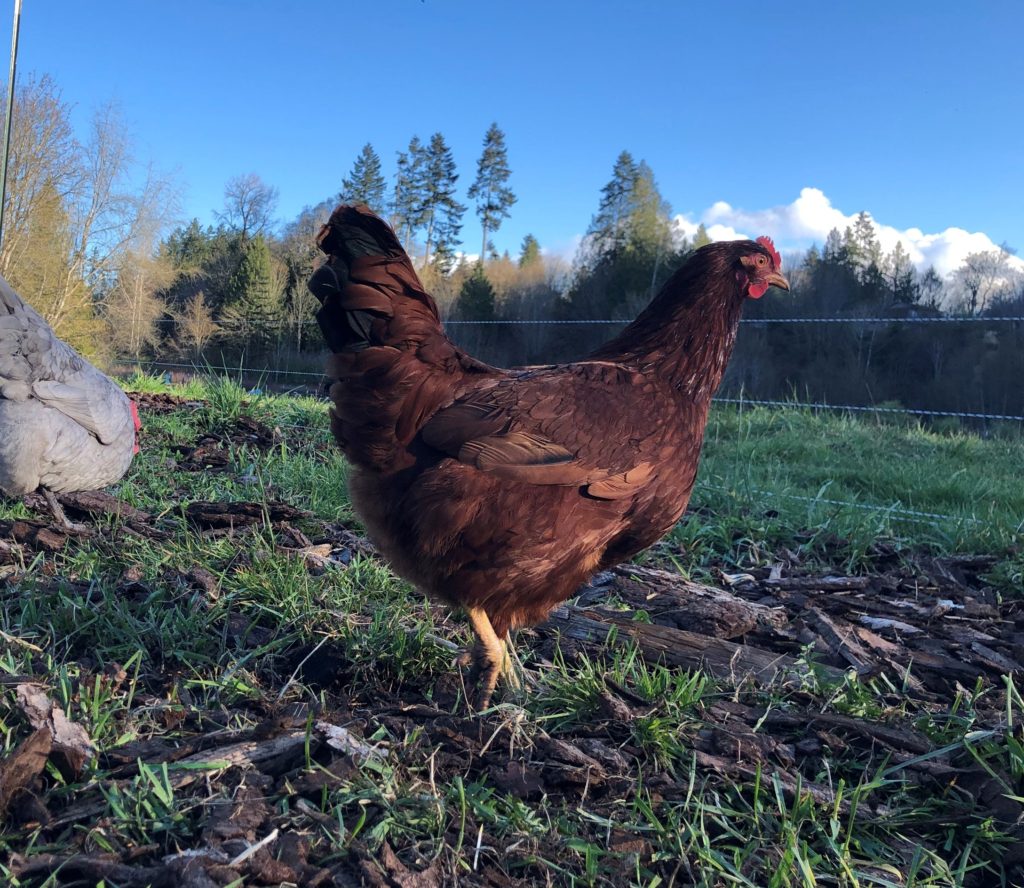
Rhode Island Red hen
The Livestock Conservancy defines heritage breed chickens as “hearty, long-lived, and reproductively vital birds that provided an important source of protein to the growing population of the country until the mid-20th century. With the industrialization of chickens many breeds were sidelined in preference for a few rapidly growing hybrids. The Livestock Conservancy now lists over three-dozen breeds of chickens in danger of extinction. Extinction of a breed would mean the irrevocable loss of the genetic resources and options it embodies.”
Under the topic of birds and bees, I want to share one more story in photos. Last week when we went to use our stock trailer, we discovered a robin’s nest intricately woven into the space above the spare tire. Knowing it wouldn’t survive a jostling ride, Daniel moved it to the branches of a nearby maple and we hoped that the mother bird would accept the change of scenery. We haven’t bothered her since, but Jake reported recently that he saw a robin nearby. Hopefully, the mother was okay with the move.
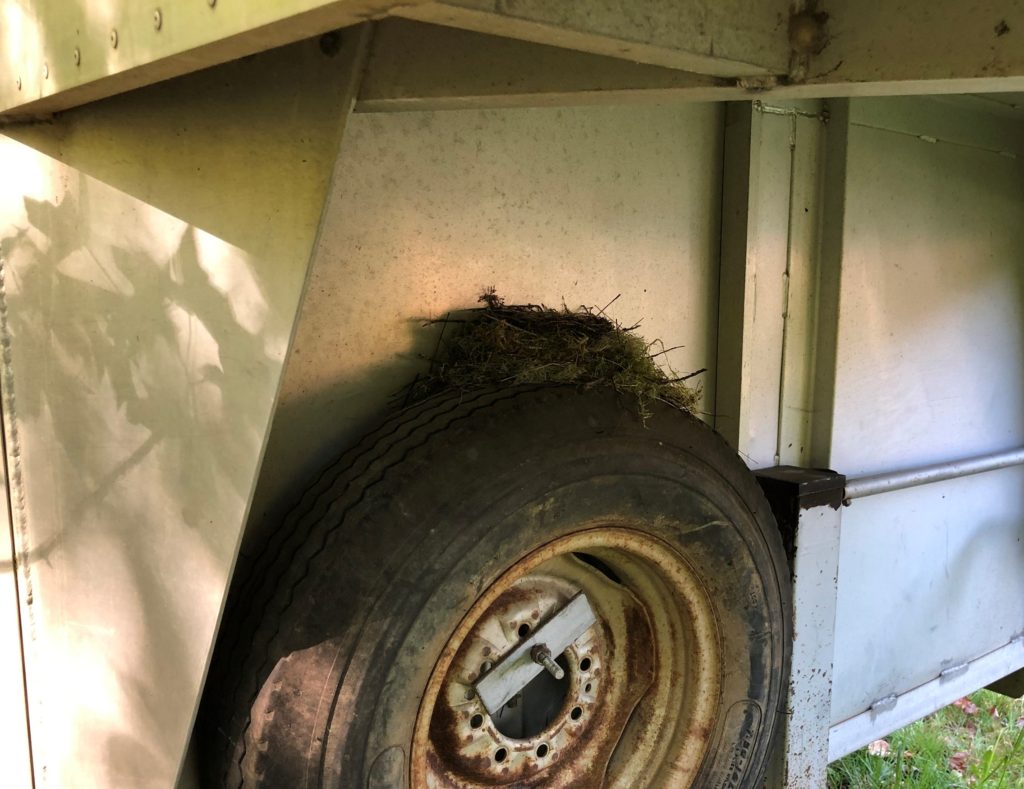
Robin’s nest on spare tire 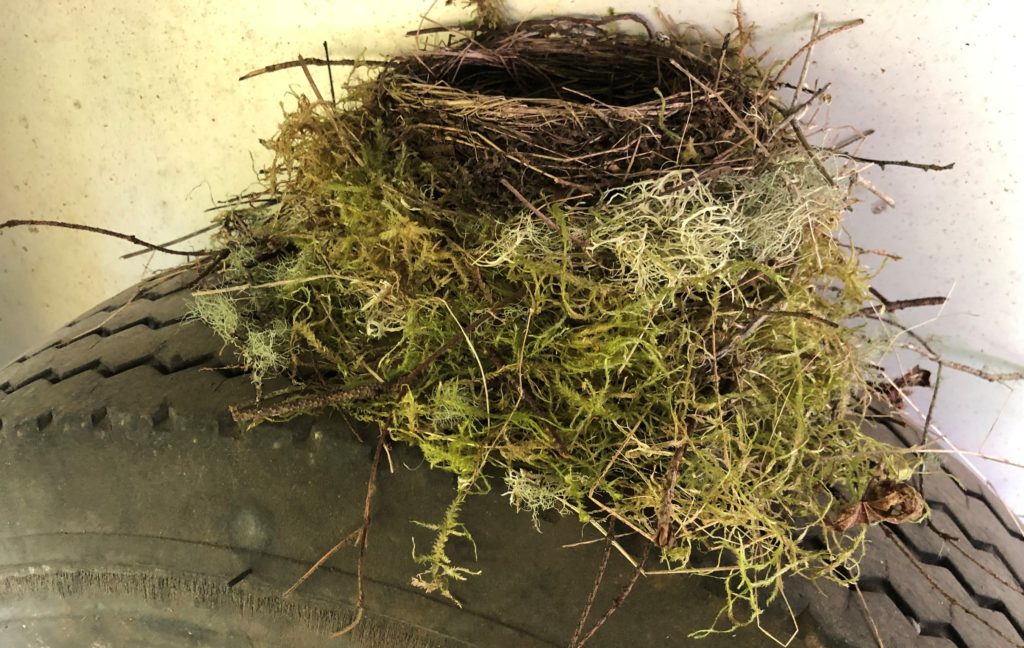
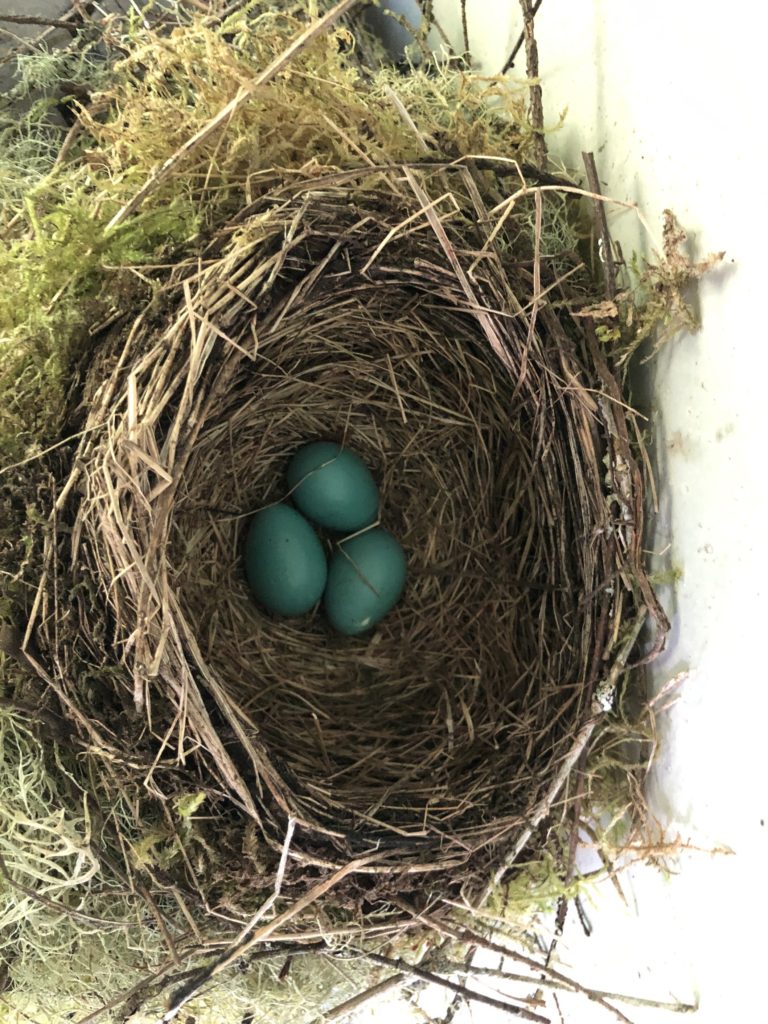
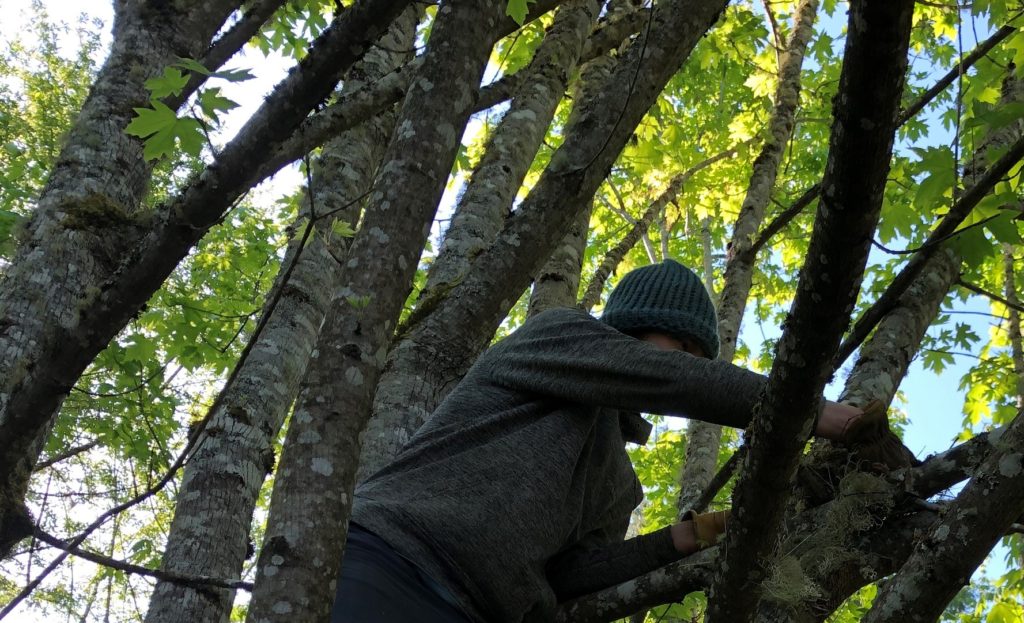
Dan carefully places nest in higher branches of nearby maple tree
